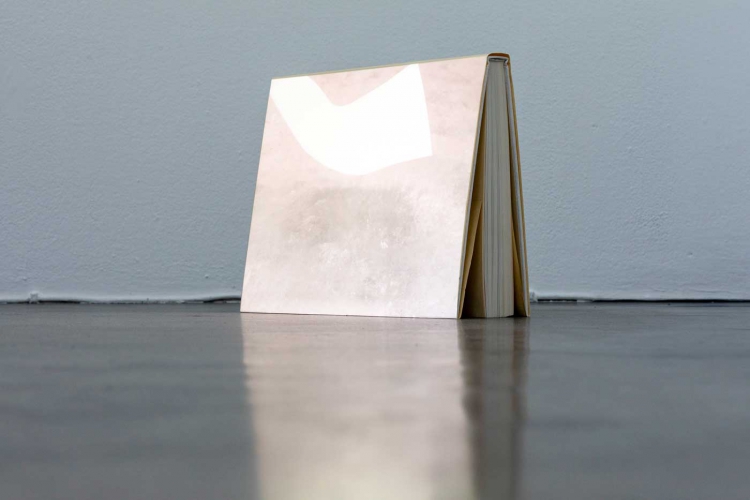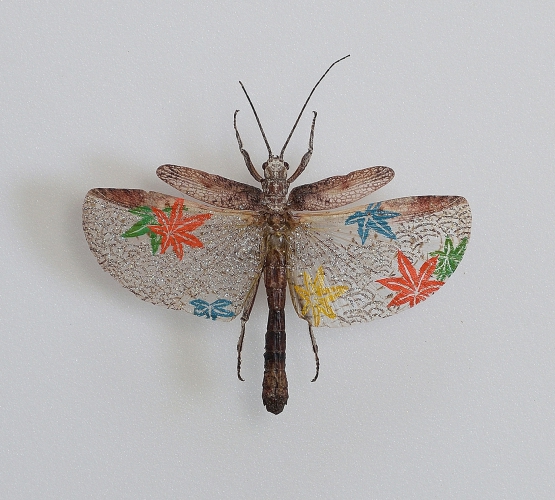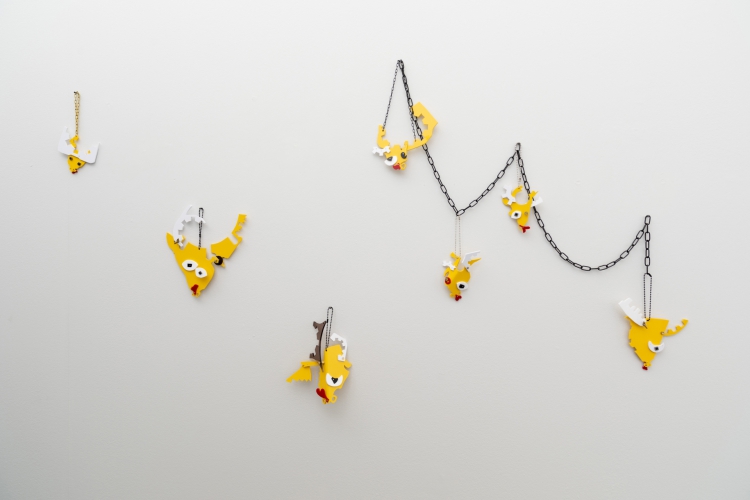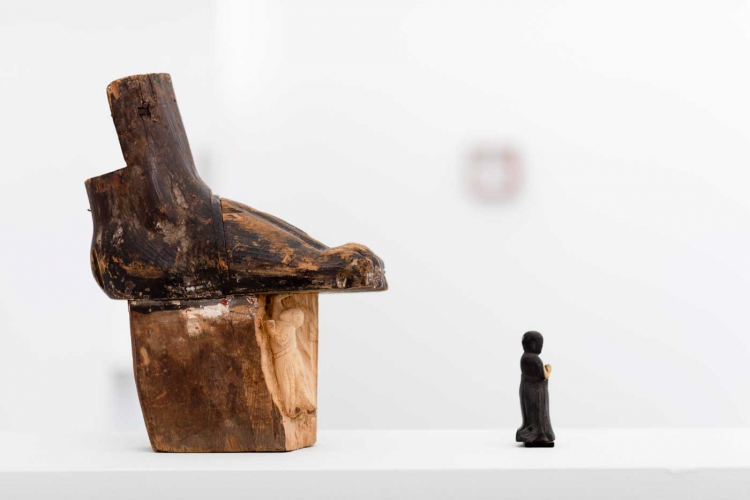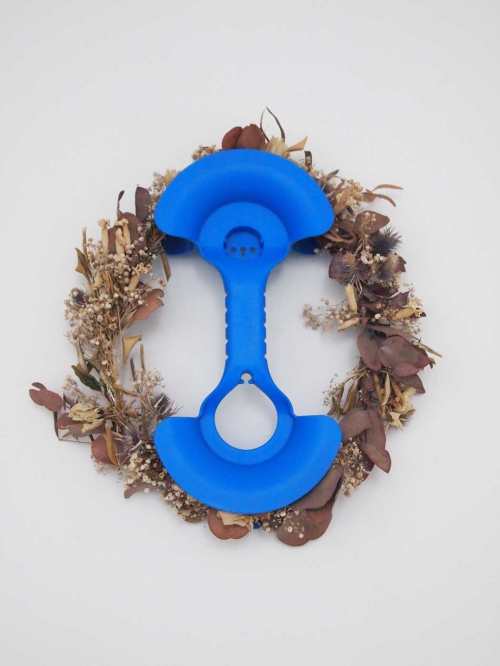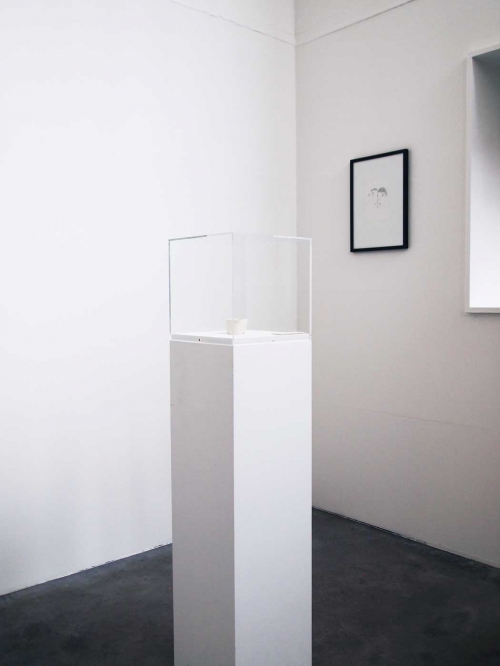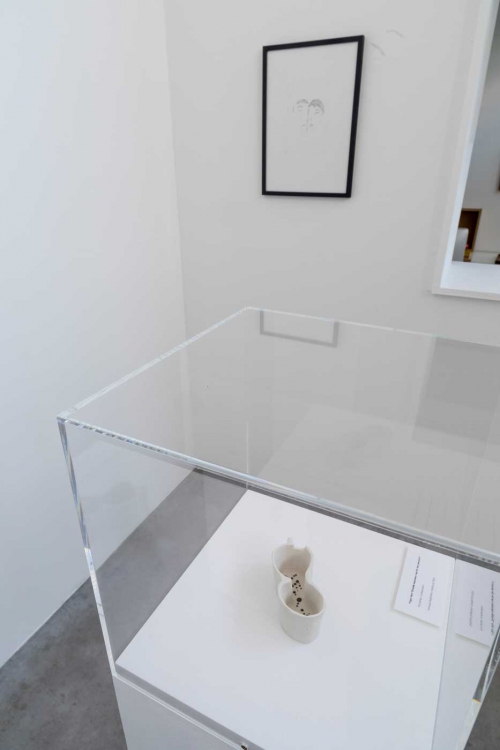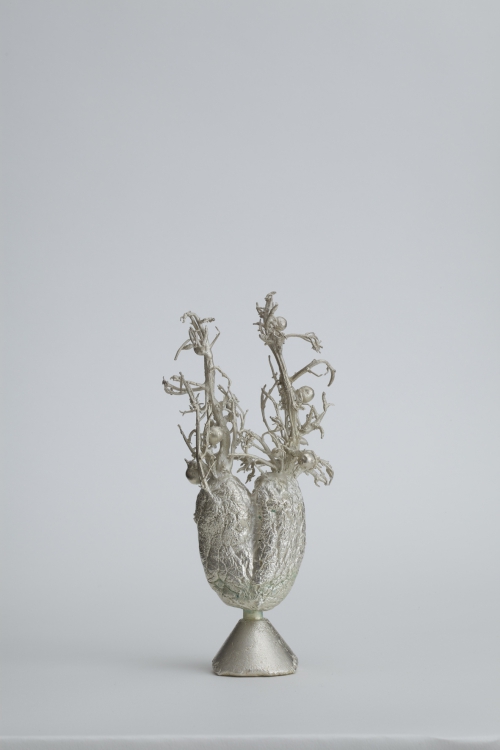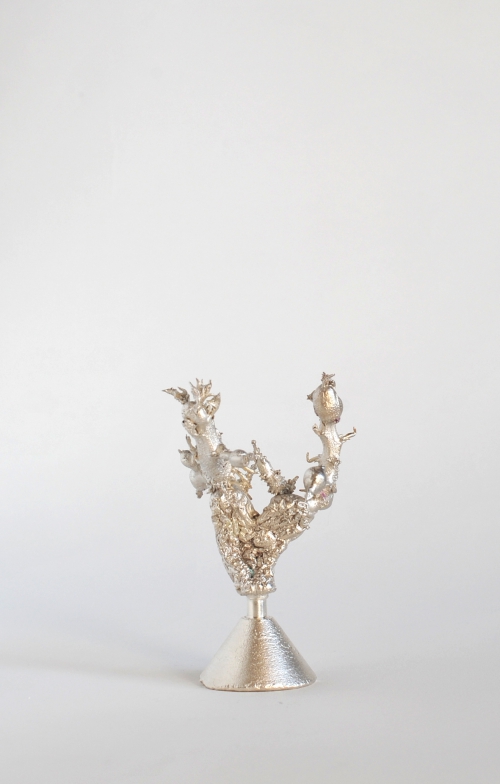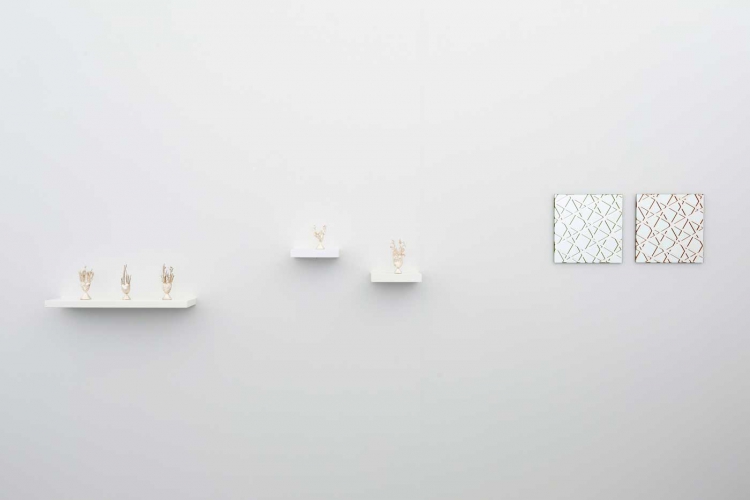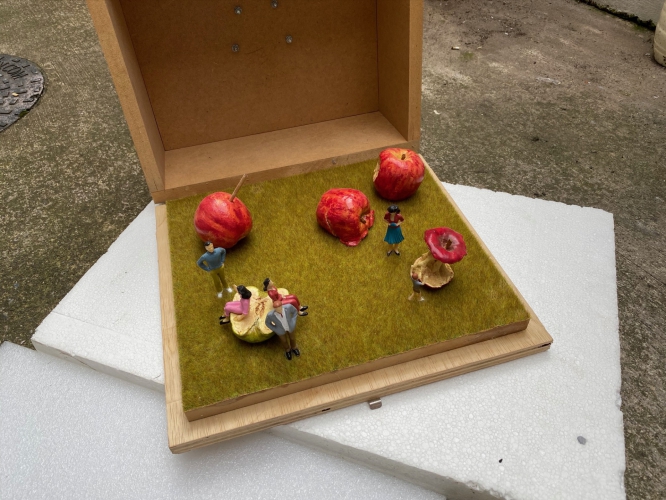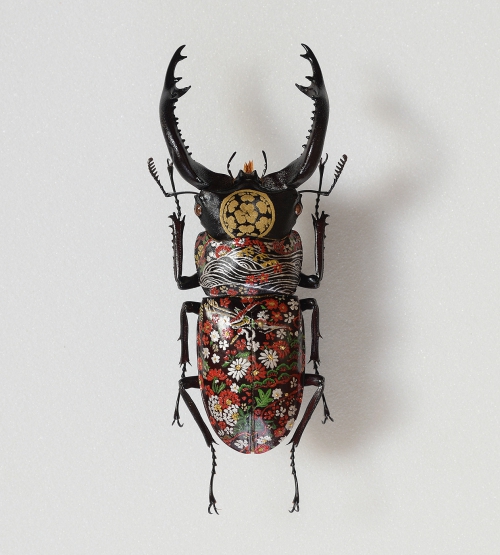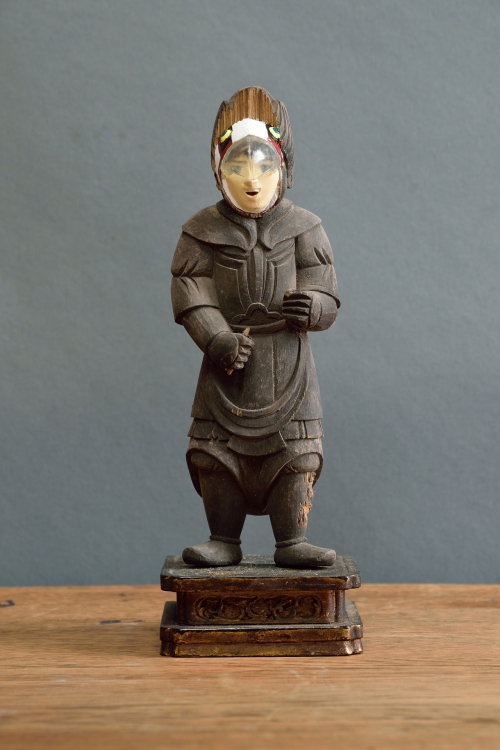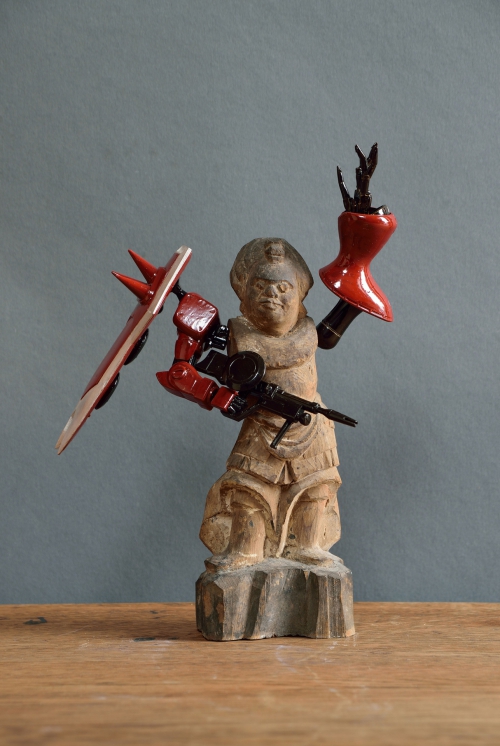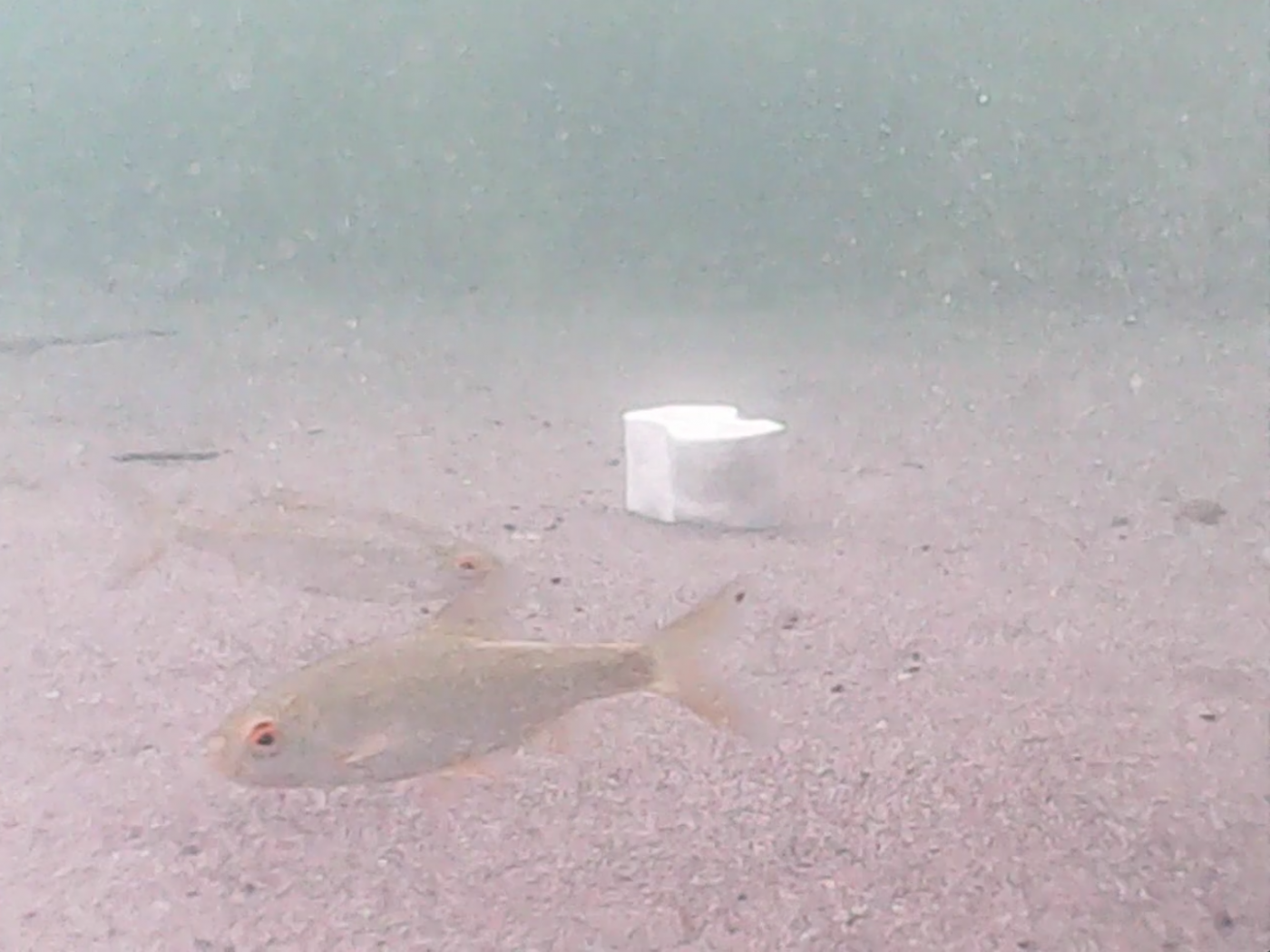
04.08. — 05.09.2020
SMALL IS BEAUTIFUL²
Akihiro Higuchi, Shiro Masuyama, Ken Matsubara, Keníchiro Taniguchi, Mariella Mosler, Tatsuya Sugimoto
Akihiro Higuchi, Shiro Masuyama, Ken Matsubara, Ken'íchiro Taniguchi, Mariella Mosler, Tatsuya Sugimoto.
Nothing against expensive large formats - the title of the exhibition "Small Is Beautiful" does not refer to dimensions and prices. It is borrowed from a book by the German-British economist Ernst Friedrich Schumacher and formulates a mindful attitude that is also familiar in the Japanese tradition: economical use of resources and attention to detail, beauty in the incidental and harmony in harmony with nature.
In a special way, such thoughts are conveyed in the beautiful lightness of a paper floating in the wind, with which Ken Matsubara also makes the otherwise hardly representable breeze visible. In the video "Paper in the Wind", the poetic situation is projected onto an old book - perhaps so that the often-read thoughts also start to fly ...
The aspiration, but also the difficulty, of living in harmony with nature is found in the metaphorical, conceptual photo and video work "Making a saddle for the Bactrian camel I shared using its own wool". As a guest of the nomads in Mongolia, Shiro Masuyama shorn a camel himself and wove a kind of saddle from its camel hair. He then used it when riding the same animal: A friendly, elaborate and unusually direct kind of relational experience. The artist, who is particularly interested in social processes, lives in Northern Ireland, which is certainly significant for someone who has also staged one-person bars - a guest isolation that is currently very topical again.
The weight of traditions is hinted at when the figure of Shōtoku, a legendary 7th century imperial prince and Buddhist temple founder, is weighed down by the weight of a large statue foot. The work "Restoration - Hero - Taishi" is also a re-carved reinterpretation of a famous child portrait of the revered Japanese emperor. Here, as in many other works, Akihiro Higuchi uses real antiques and even childhood objects, which always have their own history before the artist's interpretive, sometimes even healing intervention.
The small ceramic cup "Double espresso cup for two persons" by Tatsuya Sugimoto spans much longer periods of time. At its core, made of the millennia-old volcanic rock of the Eifel, it not only establishes a relationship with the earth's history, it is also a current offer of a relationship: Here, a "double espresso" is not a quantity or even has to be poured together from two small cups, but is, as a double cup, an offer for the interaction of two people to create new, perhaps ritual drinking customs. Perhaps, even the double cup itself exists twice. The artist has sunk one copy in Lake Laach. Since this water is the full caldera of a volcano that may someday become active again, it may be that in millennia, nature itself will eruptively bring this strange artefact back to the light of the future.
The assembled little creatures by Keníchiro Taniguchi, called "Hecomi Garactoring - Reindeers", are to be understood in a rather playful way. In keeping with the sustainability emphasised here, they were created from the remnants of other works. These otherwise large foldable sculptures, derived from the shapes of cracks in urban walls and pavements or from the outlines of entire cities, oscillate between surveys of the unseen and decorative forms that decay or a social organism have involuntarily produced. It is almost a primal human need to see figures in unknown shapes, be they large or small - what once served as protection against danger now inspires the imagination.
Known for years for the revaluation of the ornament into a consciously perceived, effective form, art professor Mariella Mosler also shows how noble an element of everyday life that has become useless for its usual use can be: In her "Love Hearts", wizened, sprouted potatoes become Wunderkammer, pieces of pure silver. Already miraculously grown into a heart shape, the sprouts become tentacles and rays of love. A completely natural object unfolds a high, almost religious symbolism.
The featured works show great respect for what has been found, for the dignity of what has become and the reflection of the profound in the small and everyday. All in very different ways and in very different areas of the world, they make visible the beauties of the targeted look at what is often overlooked.
Hajo Shiff... show less
Nothing against expensive large formats - the title of the exhibition "Small Is Beautiful" does not refer to dimensions and prices. It is borrowed from a book by the German-British economist Ernst Friedrich Schumacher and formulates a mindful attitude that is also familiar in the Japanese tradition: economical use of resources and attention to detail, beauty in the incidental and harmony in harmony with nature.
In a special way, such thoughts are conveyed in the beautiful lightness of a paper floating in the wind, with which Ken Matsubara also makes the otherwise hardly representable breeze visible. In the video "Paper in the Wind", the poetic situation is projected onto an old book - perhaps so that the often-read thoughts also start to fly ...
The aspiration, but also the difficulty, of living in harmony with nature is found in the metaphorical, conceptual photo and video work "Making a saddle for the Bactrian camel I shared using its own wool". As a guest of the nomads in Mongolia, Shiro Masuyama shorn a camel himself and wove a kind of saddle from its camel hair. He then used it when riding the same animal: A friendly, elaborate and unusually direct kind of relational experience. The artist, who is particularly interested in social processes, lives in Northern Ireland, which is certainly significant for someone who has also staged one-person bars - a guest isolation that is currently very topical again.
The weight of traditions is hinted at when the figure of Shōtoku, a legendary 7th century imperial prince and Buddhist temple founder, is weighed down by the weight of a large statue foot. The work "Restoration - Hero - Taishi" is also a re-carved reinterpretation of a famous child portrait of the revered Japanese emperor. Here, as in many other works, Akihiro Higuchi uses real antiques and even childhood objects, which always have their own history before the artist's interpretive, sometimes even healing intervention.
The small ceramic cup "Double espresso cup for two persons" by Tatsuya Sugimoto spans much longer periods of time. At its core, made of the millennia-old volcanic rock of the Eifel, it not only establishes a relationship with the earth's history, it is also a current offer of a relationship: Here, a "double espresso" is not a quantity or even has to be poured together from two small cups, but is, as a double cup, an offer for the interaction of two people to create new, perhaps ritual drinking customs. Perhaps, even the double cup itself exists twice. The artist has sunk one copy in Lake Laach. Since this water is the full caldera of a volcano that may someday become active again, it may be that in millennia, nature itself will eruptively bring this strange artefact back to the light of the future.
The assembled little creatures by Keníchiro Taniguchi, called "Hecomi Garactoring - Reindeers", are to be understood in a rather playful way. In keeping with the sustainability emphasised here, they were created from the remnants of other works. These otherwise large foldable sculptures, derived from the shapes of cracks in urban walls and pavements or from the outlines of entire cities, oscillate between surveys of the unseen and decorative forms that decay or a social organism have involuntarily produced. It is almost a primal human need to see figures in unknown shapes, be they large or small - what once served as protection against danger now inspires the imagination.
Known for years for the revaluation of the ornament into a consciously perceived, effective form, art professor Mariella Mosler also shows how noble an element of everyday life that has become useless for its usual use can be: In her "Love Hearts", wizened, sprouted potatoes become Wunderkammer, pieces of pure silver. Already miraculously grown into a heart shape, the sprouts become tentacles and rays of love. A completely natural object unfolds a high, almost religious symbolism.
The featured works show great respect for what has been found, for the dignity of what has become and the reflection of the profound in the small and everyday. All in very different ways and in very different areas of the world, they make visible the beauties of the targeted look at what is often overlooked.
Hajo Shiff... show less

